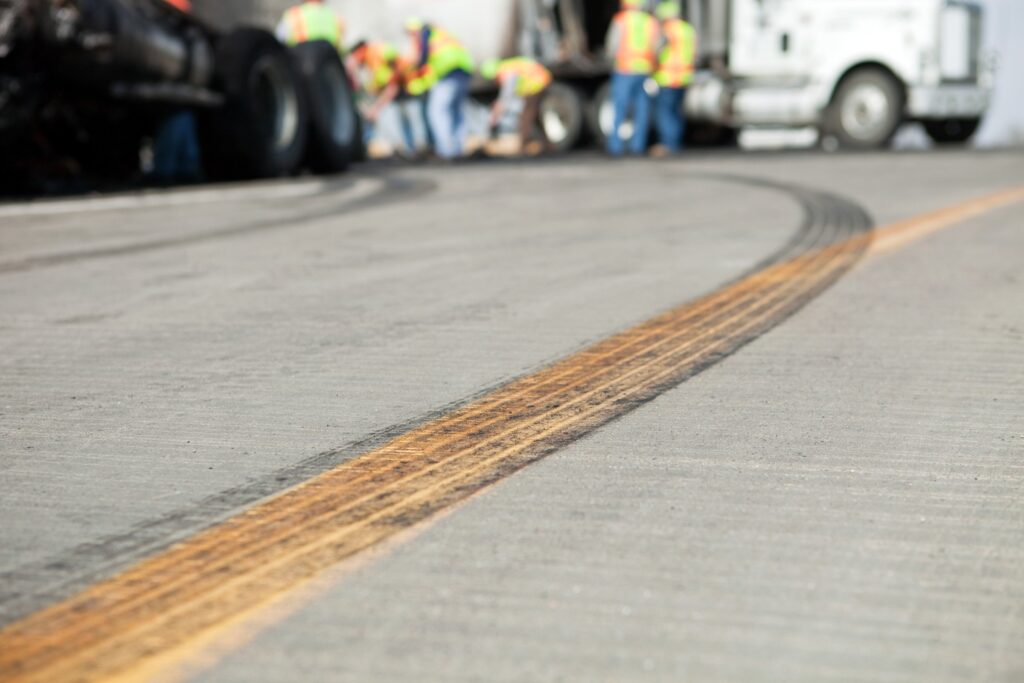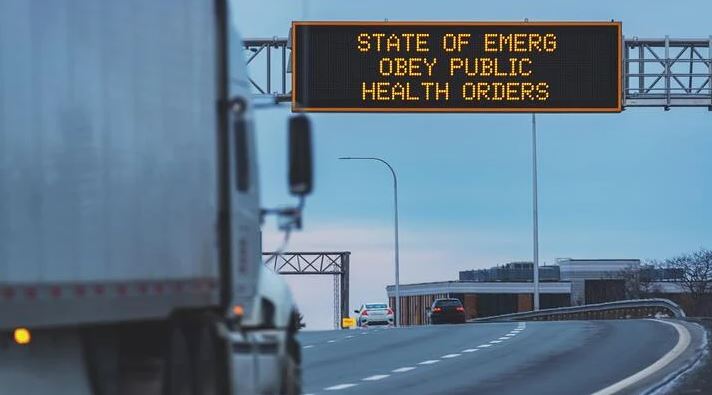
![]()
LANE CHANGE CRASHES
A lane change crash occurs when a driver moves into an adjacent lane and strikes another vehicle or object.
Contributing factors: Making frequent or abrupt lane changes. Blind spots. Mismanaging the space around the truck. Failing to use turn signals. Failing to use mirrors or to keep mirrors clean or adjusted properly.
Crash-prevention techniques: Stay in one lane as much as possible. Make quick glances to mirrors. Keep mirrors clean and properly adjusted. Use the “lean and look” method to monitor blind spots. When exiting, get in the exit lane well in advance and use the turn signal

LOSS OF CONTROL CRASHES
Loss of control crashes include jackknifes, lane departures (when one or more tires are off the road surface), rollovers, and steer tire blowouts resulting in losing control of the vehicle and causing a crash.
Contributing factors: Losing traction due to wet or dry surfaces (jackknifes). Driving while distracted (lane departures). Traveling too fast on a ramp or curve (rollovers). Striking a pothole (steer tire blowout).
Crash-prevention techniques: Conduct pre-trip inspections. Observe the proper speed for conditions. Avoid distractions. Be attentive to the road ahead. Know how to straighten the truck if a jackknife occurs.

REAR END CRASHES
A rear-end crash is when a vehicle does not stop in time to avoid hitting the back of the vehicle directly in front.
Contributing factors: Following too closely or tailgating. Speeding. Driving too fast for the conditions. Driving while distracted. Improper brake adjustment. Insufficient tire tread depth. Slippery surfaces.
Crash-prevention techniques: Maintain proper following distance. Avoid distractions. Drive 2-3 MPH below the flow of traffic, not to exceed the speed limit. Adjust speed to the conditions. Maintain equipment properly.

RUN UNDER CRASHES
A run under crash – including a right-turn squeeze collision – is when a vehicle impacts the side of the truck and runs under the trailer.
Contributing factors: Blocking oncoming traffic. Missing reflective tape or malfunctioning trailer lights. Making U-turns or wide right turns. Misjudging the speed of oncoming traffic when turning.
Crash-prevention techniques: Yield to oncoming traffic. Do not make U-turns. Use traffic control assistance and a spotter if required to back up across travel lanes. Keep the rear of the trailer close to the curb when making a right- hand turn. Time left turns so the trailer does not block intersections.
Ready to get started? Our team of transportation industry professionals will assess your needs and provide you with comprehensive, cost-effective insurance and risk management solutions. Contact us online or call our office at 1-877-406-5915.


